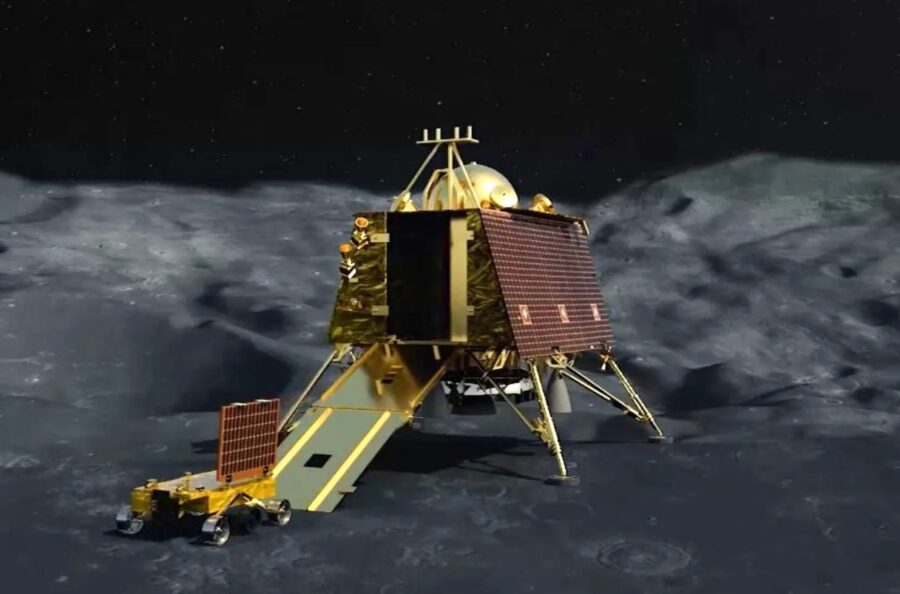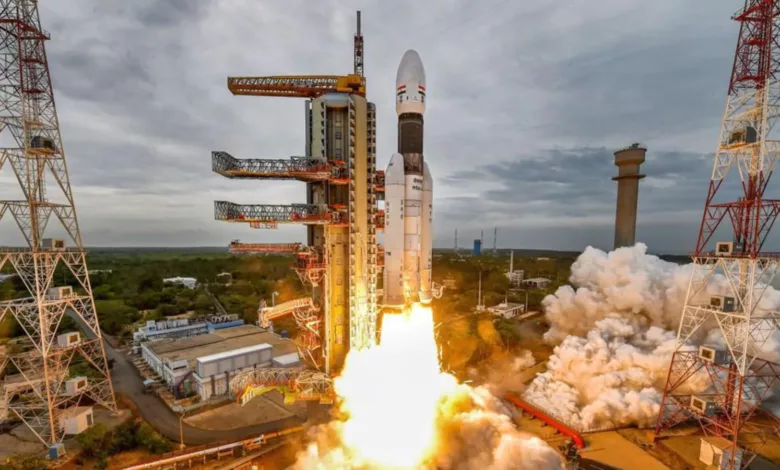Chandrayaan-3, India’s third lunar exploration mission, stands as a remarkable testament to the country’s growing prowess in space technology. Launched by the Indian Space Research Organisation (ISRO), this mission was designed to build upon the successes of its predecessors, Chandrayaan-1 and Chandrayaan-2, and further contribute to our understanding of the Moon’s mysteries.
Mission Objectives:
Chandrayaan-3 was envisioned with a comprehensive set of scientific and technological objectives. Its primary goal was to deploy a lander and a rover on the lunar surface, focusing on regions with high scientific potential. The mission aimed to study the Moon’s topography, mineral composition, and overall geology, shedding light on its origin and evolution.
Design and Development:
The design and development of Chandrayaan-3 were guided by the lessons learned from Chandrayaan-2’s Vikram lander’s unfortunate hard landing on the Moon’s surface. Chandrayaan-3’s lander incorporated advanced landing technologies and improved communication systems to ensure a safer and more accurate descent.
The rover, equipped with sophisticated instruments, was designed to traverse the lunar terrain, conducting experiments to analyze the Moon’s composition and characteristics. Its compact yet powerful design allowed it to navigate challenging lunar landscapes efficiently.
Technological Innovations:
Chandrayaan-3 incorporated several technological innovations that set the stage for future lunar exploration missions. One notable advancement was the precision landing technology, which employed a combination of radar-based navigation and autonomous hazard detection systems. This technology ensured a controlled and soft landing, mitigating the risks associated with the challenging lunar environment.
Additionally, the rover featured advanced remote sensing instruments, including high-resolution cameras, spectrometers, and seismometers. These instruments provided valuable data about the Moon’s surface, subsurface, and atmosphere, enhancing our understanding of its geological history and potential resources.
Mission Execution:
Chandrayaan-3’s journey to the Moon began with a successful launch atop a powerful GSLV Mk III rocket. The launch vehicle placed the lander and rover into a precise lunar trajectory, marking a significant milestone in India’s space exploration endeavors.
Upon reaching the lunar orbit, the lander executed a series of intricate maneuvers to position itself for descent. The onboard guidance and navigation systems continuously assessed the terrain and adjusted the trajectory to avoid potential hazards. As the lander approached the surface, it utilized its propulsion system to slow down and achieve a gentle landing.
The successful landing was met with jubilation and relief at ISRO’s mission control center. The rover was deployed soon after, initiating its scientific investigations and data collection activities. The advanced instruments onboard the rover began transmitting data back to Earth, offering insights into the Moon’s geological processes, mineral resources, and potential for future exploration.
Scientific Discoveries and Contributions:
Chandrayaan-3’s mission yielded a plethora of scientific discoveries that significantly enriched our understanding of the Moon. The rover’s comprehensive geological analysis revealed evidence of ancient volcanic activity, tectonic processes, and impact cratering. High-resolution images captured by the rover’s cameras provided intricate details of the lunar surface, aiding in the identification of potential landing sites for future missions.
One of the mission’s most groundbreaking findings was the detection of water ice in permanently shadowed regions near the lunar poles. This discovery had profound implications for future lunar exploration, as water ice could potentially serve as a valuable resource for future manned missions and the production of rocket propellant.
International Collaboration and Inspiration:
Chandrayaan-3’s success wasn’t limited to scientific achievements alone; it also fostered international collaboration and inspired future generations of scientists, engineers, and space enthusiasts. The mission’s data and findings were shared with the global scientific community, facilitating cross-border research and cooperation in lunar studies.

Moreover, Chandrayaan-3 ignited a renewed interest in space exploration among students and young minds. ISRO’s outreach programs and educational initiatives leveraged the mission’s success to educate and inspire students to pursue careers in science, technology, engineering, and mathematics (STEM) fields.
Conclusion:
Chandrayaan-3 stands as a remarkable success story in India’s space exploration journey. Through meticulous planning, technological innovation, and unwavering determination, ISRO successfully achieved its mission objectives and contributed significantly to our understanding of the Moon. The mission’s scientific discoveries, technological advancements, and collaborative spirit have left an indelible mark on the global space exploration landscape, inspiring future generations to reach for the stars and unravel the mysteries of the cosmos.
